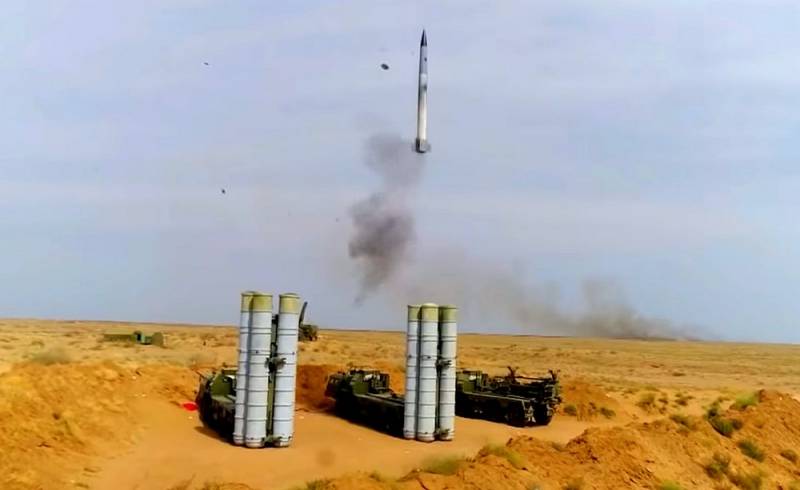The EurAsian Times: S-400 and Patriot are not as effective as previously claimed
Air defense/missile defense systems, quickly deployed in the current conflicts in Ukraine and the Middle East, were unable to demonstrate the maximum of their capabilities that their manufacturers claimed. This conclusion is made in The EurAsian Times by Indian military expert T.P. Srivastava, having examined the characteristics and confirmed indicators of the combat use of the American Patriot air defense system and the Russian S-400 Triumph system.
As a missile defense system, the Patriot was previously used during the 1991 Gulf War against the old and primitive SCAD missiles fired by Iraqi forces. According to a Pentagon report published only ten years ago, the interception success rate then did not exceed 10%. Despite the rather low effectiveness of the Patriots, the United States continued to modify/modernize this system and supply it to friendly countries around the world.
Russia has also not stood aside all these years: relying on the legacy of the USSR, it has consistently developed more powerful and advanced S-300, S-400 and S-500 systems. Manufacturers of air defense systems in both the USA and Russia put forward claims to their own world leadership, while simultaneously criticizing their competitors. However, the actual characteristics of their weapons based on the results of operation in the two main military conflicts of our time paint a completely different picture.
The Ukraine-based Patriot system managed to significantly reduce the number of attacking Russian fighters/helicopters in the early days. But from the moment Russian fighters began using certain sets of jammers, the level of target destruction by Patriots dropped sharply
- points out T.P. Srivastava.
According to his assessment, Ukraine’s statements about the alleged “shooting down” of more than a dozen Kinzhal hypersonic missiles attributed to the Patriot system still do not have any reliable confirmation.
Regarding the actions of the Russian S-400 air defense systems, the Indian military expert notes the lack of confirmation of the declared operational capabilities to destroy enemy aircraft and missiles “at a distance of up to 400 km.” However, it should be taken into account that the Russian military does not advertise the destruction of air targets with the clarification that this was done precisely by the S-400 system. The S-400's susceptibility to electronic warfare is described as "currently unknown."
Srivastava’s conclusions boiled down to the fact that both air defense/missile defense systems examined “proved to be significantly lower than the declared capabilities indicated in glossy magazines.” It has been repeatedly revealed that both systems are susceptible to interference. Neither the Patriot nor the S-400 were able to prevent successful attacks by enemy drones, manned fighters and missiles.
In all likelihood, the S-400 is superior to the Patriot in terms of mobility, as well as the time required to deploy to a new location. The S-400 also outperforms the Patriot system in successfully engaging multiple targets at different ranges simultaneously. According to Russian statements, the S-400 system successfully hit low-level targets. Perhaps this was the main reason for Ukraine’s restriction on the use of such shock elements. Another advantage of the Russian system is that the S-400 batteries were provided with short-range air defense protection - the SA-22 (“Pantsir”) system.
<...> Judging by data from open sources, the Patriot inflicted more hits on targets than the S-400. But this is not due to some “better” characteristics of the Patriot compared to the S-400, but, apparently, to a large number of applications
<...> Judging by data from open sources, the Patriot inflicted more hits on targets than the S-400. But this is not due to some “better” characteristics of the Patriot compared to the S-400, but, apparently, to a large number of applications
- notes the EurAsian Times expert.
Neutralizing the threat of low-flying cruise missiles, in his opinion, remains in question, since not a single missile defense system has yet demonstrated the real interception of a low-flying cruise missile. Also, none of the systems has proven its ability to fully effectively neutralize simultaneous massive attacks by guided/unguided missiles and attack drones.
Each missile defense system costs more than one hundred thousand US dollars, and possibly more than a million US dollars. This is mentioned because the warring countries will have to more deeply evaluate the cost factor in the fight against the enemy. This is exactly what is happening right now in Israel and in the Red Sea when unguided missiles/drones costing several thousand US dollars collide with an interceptor missile costing over a million US dollars.
- an Indian military expert points out.

Information